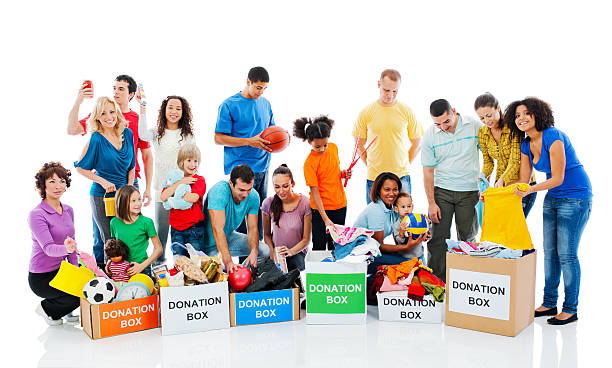Donate Old Clothes: A Guide to Giving Back
The Importance of Donating Old Clothes
In today’s consumer-driven world, we accumulate more clothing than we can possibly wear. This surplus often ends up cluttering our closets, rarely seeing the light of day. By donating old clothes, we can extend the lifecycle of these garments, reduce waste, and help those in need. Clothing donations have a profound impact, providing essential items to the less fortunate and supporting various charitable organizations.
Environmental Benefits of Donating Clothes
Fast fashion has led to a significant increase in textile waste. Millions of tons of clothing end up in landfills every year, contributing to environmental degradation. Donating old clothes helps mitigate this issue by reducing the amount of waste that reaches landfills. It also lowers the demand for new clothing production, which in turn conserves resources and reduces pollution. By giving your clothes a second life, you are playing a part in protecting our planet.
Economic Impact of Clothing Donations
The economic impact of donating clothes is multifaceted. For recipients, donated clothes provide essential items that they may not be able to afford otherwise. This can be especially important in times of economic hardship, such as during job loss or natural disasters. For charitable organizations, clothing donations can be sold in thrift stores to generate revenue that supports their programs and services. This revenue can be used for a variety of purposes, including funding shelters, food banks, and job training programs.
Personal Benefits of Donating Clothes
Donating clothes can also bring personal satisfaction. It provides an opportunity to declutter your living space and simplify your life. Moreover, knowing that your donations are helping others can bring a sense of fulfillment and purpose. Many people find joy in the act of giving and appreciate the positive impact their contributions have on the community.
How to Prepare Clothes for Donation
Before donating clothes, it is essential to ensure they are in good condition. Items should be clean, free of stains, and in wearable condition. This means no tears, missing buttons, or broken zippers. Taking the time to wash and mend your clothes before donating shows respect for the recipients and the organizations that will distribute them. It is also helpful to sort your clothes by type and season, as this can make it easier for organizations to process and distribute the donations.
Where to Donate Clothes
There are many places where you can donate clothes. Nonprofit organizations, such as Goodwill and The Salvation Army, have donation centers across the country. These organizations often sell donated items in their thrift stores, using the proceeds to fund their charitable activities. Local shelters and community centers also accept clothing donations, particularly items that are suitable for the current season. Additionally, there are online platforms that facilitate clothing donations, allowing you to send your items to those in need from the comfort of your home.
The Impact on Recipients
For many recipients, donated clothes are more than just garments. They represent dignity and hope. For individuals experiencing homelessness, a warm coat can make the difference between life and death during the winter months. For someone reentering the workforce, a professional outfit can provide the confidence needed to succeed in a job interview. By donating clothes, you are providing more than just physical items; you are offering support, comfort, and the possibility of a better future.
Clothing Drives and Community Involvement
Organizing or participating in a clothing drive is another way to contribute to the cause. Clothing drives bring communities together for a common purpose, fostering a sense of unity and shared responsibility. Schools, workplaces, and community groups often organize these events, making it easy for many people to participate. By promoting clothing drives, you can help raise awareness about the importance of donations and encourage others to get involved.
Sustainable Fashion and Donation
Donating clothes aligns with the principles of sustainable fashion. It promotes the reuse and recycling of garments, reducing the need for new production. Sustainable fashion advocates for mindful consumption and encourages individuals to consider the environmental and social impact of their clothing choices. By donating clothes, you are supporting a more sustainable and ethical approach to fashion.
Challenges and Considerations
While donating clothes is generally positive, there are some challenges and considerations to keep in mind. Not all donated clothes are suitable for reuse, and sorting through donations can be labor-intensive for organizations. It is important to donate items that are truly useful and to avoid using donation centers as a way to dispose of unwearable clothes. Additionally, some regions have more demand for certain types of clothing than others. Researching local needs can help ensure your donations have the maximum impact.
The Role of Social Media in Clothing Donations
Social media has become a powerful tool in promoting clothing donations. Many organizations use platforms like Facebook, Instagram, and Twitter to raise awareness, share success stories, and encourage donations. By sharing your donation experiences and encouraging your network to participate, you can amplify the impact of your contributions. Social media can also be used to organize virtual clothing drives and connect with organizations that need support.
Corporate Involvement in Clothing Donations
Many companies have recognized the importance of giving back and have incorporated clothing donation initiatives into their corporate social responsibility programs. Some companies organize employee clothing drives, offer matching gift programs, or partner with nonprofit organizations to facilitate donations. Corporate involvement can significantly increase the volume of donations and provide valuable resources to charitable organizations.
The Future of Clothing Donations
The future of clothing donations looks promising, with increased awareness and engagement from individuals, communities, and corporations. Technological advancements are making it easier to donate clothes, with apps and websites streamlining the process. There is also a growing trend towards circular fashion, which emphasizes the reuse and recycling of clothing. As more people embrace sustainable practices, the impact of clothing donations is likely to grow, benefiting both people and the planet.
Conclusion
Donating old clothes is a simple yet powerful way to make a difference. It supports individuals in need, reduces environmental impact, and fosters a sense of community. By taking the time to prepare your clothes for donation and choosing reputable organizations, you can ensure that your contributions have the maximum impact. Whether you donate a single garment or organize a community clothing drive, your efforts are valuable and appreciated. Embrace the opportunity to give back and make a positive change through clothing donations.




